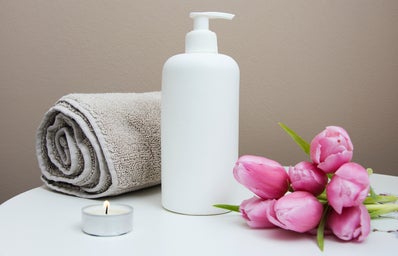In 2018, it’s hard to imagine that our modern beauty standards resemble those of the Victorian Age, a time when women were meant to be seen but not heard. With the recent body positivity movement and increased awareness of the health dangers of being a model, the global industry seems to be changing, incorporating models of all different sizes and colors. Yet, walk into any store, log on to any website, or look at any ad and it’s easy to see that the beauty standards in the United States remain restrictive and uniform. Skinny is synonymous with beautiful and there’s no room for argument, especially when the only space you’re allowed to take up comes in a size zero.
Modeling expectations in the United States do not promote a healthy lifestyle for anyone remotely involved in the industry. Dream Models did a study published in Business Insider in which they found “out of 3,000 models from leading agencies that were polled, a whopping 94% were at an unhealthy body mass index of less than 18.5.” Yes, you read that right: 94%.
The pressure of the industry to have this unreasonable body shape, weight, and fit forces an extremely concerning amount of stress on aspiring and current models.
Not only do unhealthy BMI standards negatively impact the body images of the models themselves, they also create unrealistic standards for women and girls in everyday life. When little girls and developing teens only see one body type in advertisements, magazines, and on social media platforms—a body type not everyone has—it can make them look at themselves in a different light as they grow up.
The psychological effects of the “thin” trend include a staggering blow to the self-confidence of women and girls everywhere as unreasonable body standards are spread across the country. Even with the body positivity movement, the overwhelming images of unnaturally slim bodies projected to kids, teens, and adults is extremely unhealthy and concerning. Not to mention these bodies cannot be obtained without strict dieting or falsified photos via retouching. Even with strict dieting and workouts, the “ideal” body type is far out of reach for most women.
While the United States may not be doing an adequate job providing realistic, healthy, and acceptable images for women and girls, other countries are making enormous strides.
In the fashion capital of the world, France’s government passed a set of guidelines and penalties to protect the health of models. Let’s break it down into the basic requirements as told by the New York Times:
1. Models are required to give a medical certificate every two years to the agencey “confirming their general physical well-being” and that their BMIs are healthy.
2. For models over the age of 16, their BMI will be a part of the consideration for agencies.
3. As for retouched photographs, “any ‘commercial’ image of a model whose bodily appearance has been digitally or otherwise altered will have to be labeled ‘photographie retouchée.’’
If a publisher does not state that the image has been retouched, they are subject to be fined 37,500 Euros (over 43,000 USD.) Additionally, if one employs a model not meeting health requirements or does not present a medical certificate, they will need to pay a fine of 75,000 Euros (about 87,000 USD) plus six months in jail.
By forcing the model industry to follow and execute a healthy lifestyle for its models, employees can promote a healthy body image for themselves and the people that see their images. Other countries, like Israel, Italy, Spain, and India, have also instituted programs and actions to protect the health and welfare of their models.
If the United States were to make changes and requirements for agencies similar to France, the health of our models would increase dramatically. Putting their health first also benefits our society, creating a diverse network dedicated to celebrating the many different body types of our nation and promoting acceptance of those differences.
After comparing the lack of requirements and standards for models in the United States to the strict promotion of wellness in other countries like France, it’s clear there is a long way to go to achieve a safe, healthy industry for everyone.
Photo Credit: 1



